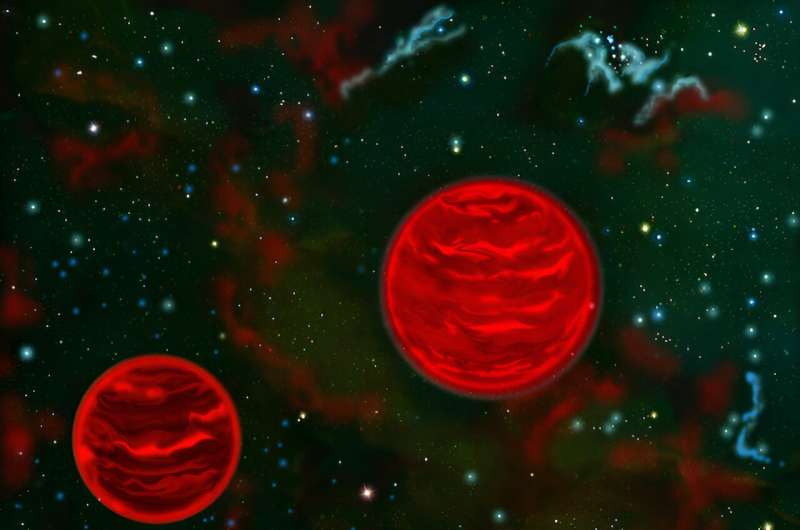This article has been reviewed according to Science X's editorial process and policies. Editors have highlighted the following attributes while ensuring the content's credibility:
fact-checked
trusted source
proofread
Astronomers discover Jupiter-sized objects drawn into each other's orbit

In our most basic understanding of our solar system, planets are drawn into the orbit of our massive star, the sun. But what happens to planet-sized objects that don't have a star? A team of astronomers studying Jupiter-mass binary objects (JuMBOs) in the Orion Nebula is gaining a new understanding of these unusual systems. These massive, free-floating objects are being drawn into orbit with each other.
These latest findings, published in The Astrophysical Journal Letters, come from observations made by the Karl G. Jansky Very Large Array (VLA) at the U.S. National Science Foundation National Radio Astronomy Observatory, and NASA's James Webb Space Telescope.
This groundbreaking discovery has been made in the field of astronomy, thanks to advancements in sensitivity that have allowed scientists to detect fainter and smaller objects in space.
Using the VLA, astronomers searched for counterparts to a group of 40 Jupiter-mass binary objects known as JuMBOs, previously identified by Pearson and McCaughrean in 2023. Surprisingly, only one of these objects, JuMBO 24, exhibited a radio counterpart.
This remarkable finding challenges existing theories on the formation of stars and planets. The radio luminosity of the two planets in this binary system is significantly higher than that detected in brown dwarfs, which are objects that share similarities with these planets. This abnormality raises new questions and provides exciting research opportunities to further understand the nature of these free-floating planets.
While it is possible that the association between infrared and radio signals is coincidental, the team considers this to be highly unlikely, with odds of only 1 in 10,000. This discovery builds upon the previous work of Kao and others who, in 2018, detected a single planetary-mass system resembling the components of JuMBO 24 using the VLA.
Dr. Luis F. Rodriguez, Professor Emeritus at the National Autonomous University of Mexico, who participated in this research, emphasizes the significance of the discovery. "What's truly remarkable is that these objects could have moons similar to Europa or Enceladus, both of which have underground oceans of liquid water that could support life," he stated.
The detection of radio waves originating from both components of a double system of free-floating planets represents a significant milestone in our exploration of the universe. It also presents an exciting opportunity for further research into the potential habitability of planets beyond our solar system.
More information: Luis F. Rodríguez et al, A Radio Counterpart to a Jupiter-mass Binary Object in Orion, The Astrophysical Journal Letters (2024). DOI: 10.3847/2041-8213/ad18ac
Provided by National Radio Astronomy Observatory





















